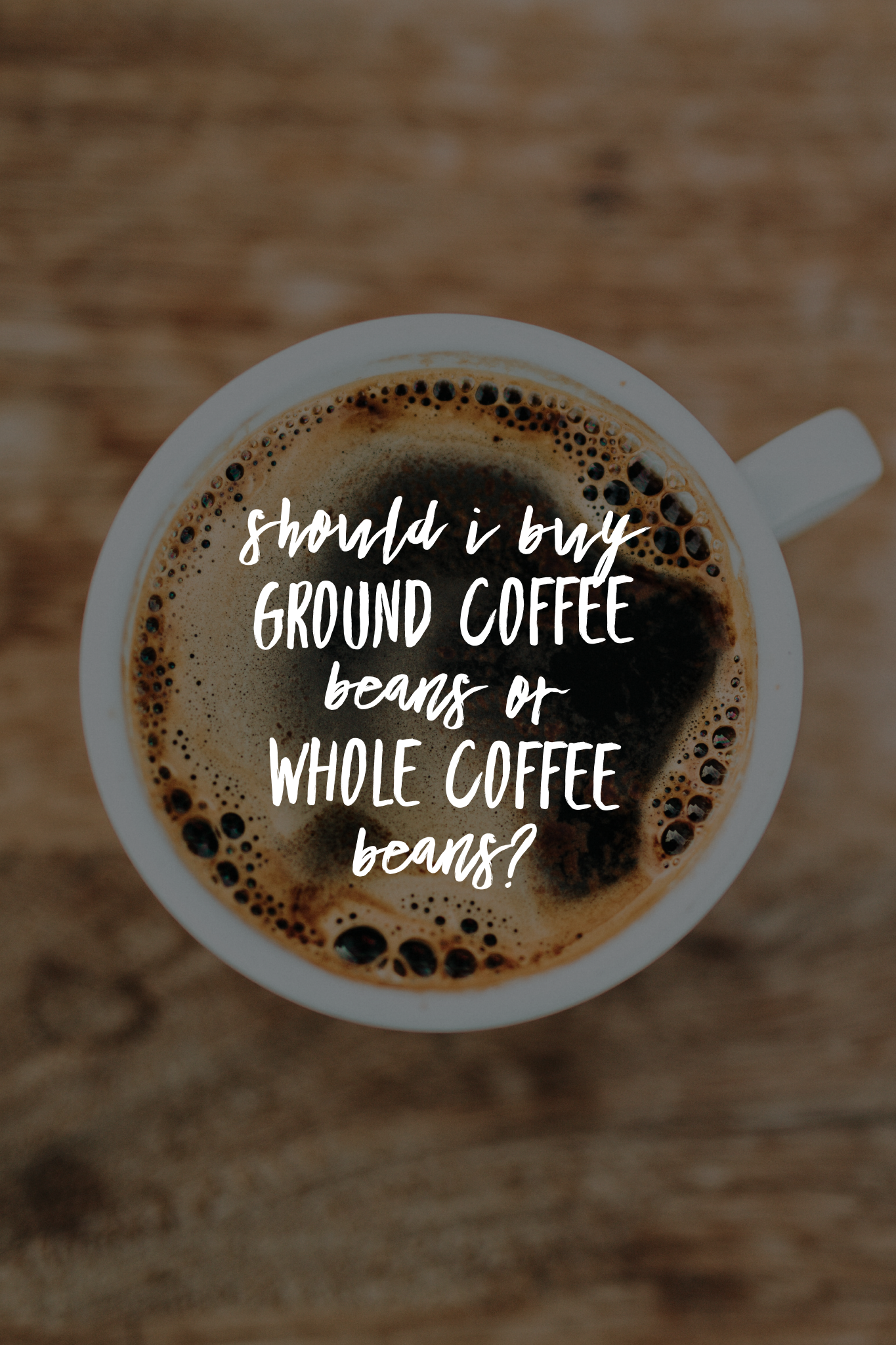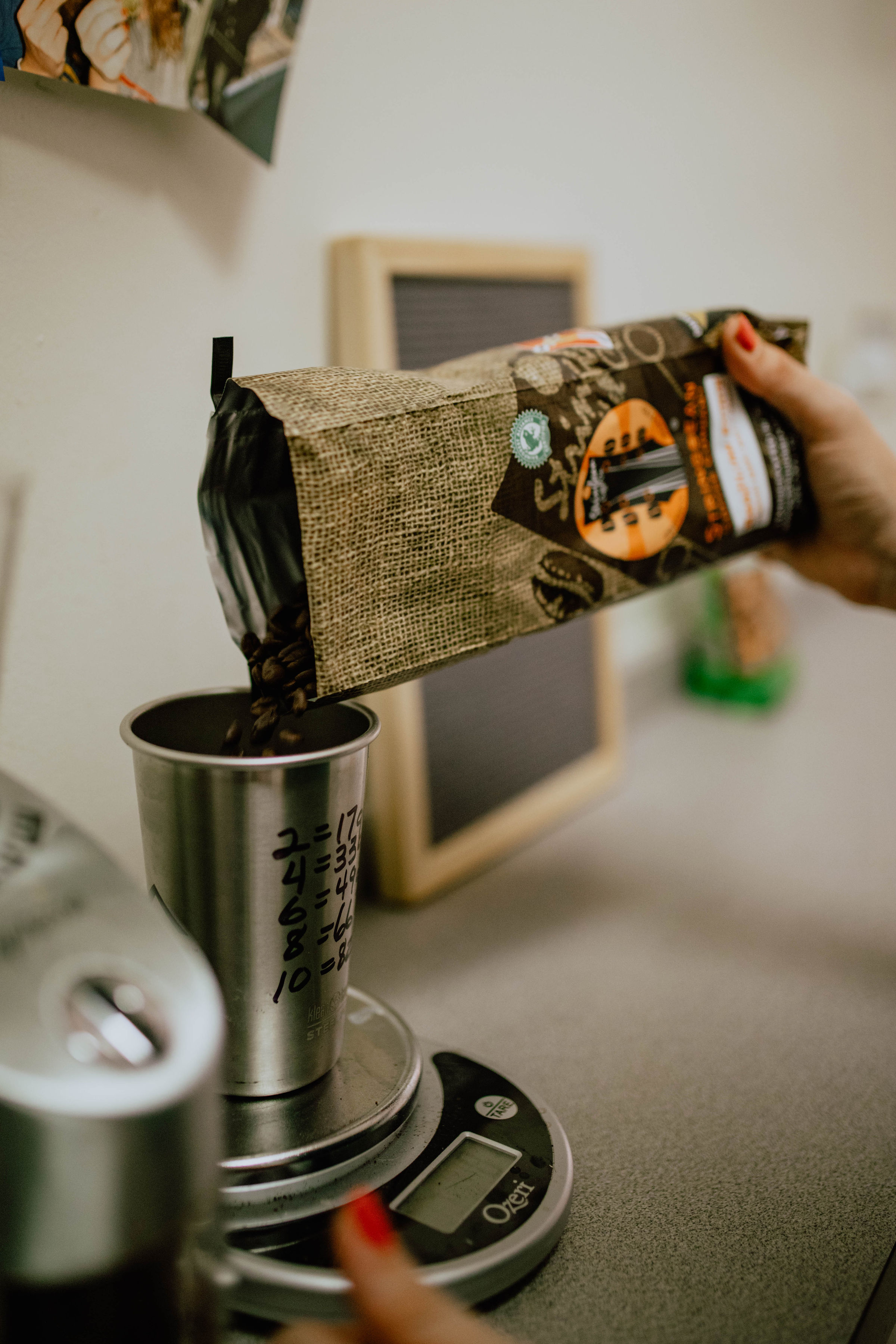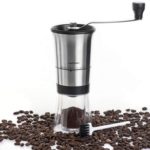Would you buy stale coffee? Of course not! Not intentionally. However, if you’ve ever purchased pre-ground coffee (and who hasn’t?) you’ve probably bought stale coffee.
What happens when coffee is ground? When coffee beans are ground they go through a process called “oxidation,” and a slow breakdown of its organic molecules begins. Sweet aromatic oils release that are responsible for some of the most vivid coffee experiences.
Unfortunately when you buy pre-ground coffee, oxygen gets a head start even before you bring it home! Not only has the oxidation process already begun, but oxygen also breaks down small pieces of food faster than large ones. Larger particles of food, like whole coffee beans, have less surface area so it takes more time for oxygen to do its dirty work.
What’s the difference?: pre-ground vs. whole bean coffee Basically, pre-ground coffee is pre-staled coffee. Stale coffee is more bitter than it has to be. It feels thin across your tongue and lacks any depth of flavor. It’s essentially a memorial service for the delicious coffee flavor and aroma that once was.
How long does coffee stay fresh? Well, after coffee is ground, experts say about 30 minutes. Whole bean coffee, on the other hand, can remain at peak freshness for two weeks after being roasted. Ready to stop wasting your precious time with stale coffee yet?
What kind of coffee grinder should I buy? We recommend using a burr grinder which is made up of two revolving abrasive surfaces (called burrs) in between which the coffee is ground. This is opposed to blade grinders which have rotating blades, like a blender, that slice up the beans into grounds and can even add heat to the already roasted coffee.
Blade grinders are less expensive than burr grinders, but the problem is that they don’t really “grind” your coffee beans. They chop them to bits with two very fast moving blades. Where does it go wrong? By repeatedly pulsing the beans at high speed, you end up with grinds which are very inconsistent in size: from powder to chunks. Avoid the drama and go with either a 1. Hand Grinder (or Burr Mill) or 2. Electric Burr Grinder
Hand Grinder (or Burr Mill): A hand-crank grinder typically gives you more bang for your buck and really shines if you need to take it on the road. Compact and durable, these manual grinders take a little extra time but can help you make a delicious pot of coffee.
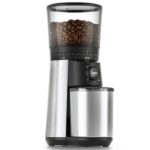 Electric Burr Grinder: Although typically more expensive, if you’re making a lot of coffee, there’s no question you want an electric burr grinder. Your poor arm will thank us later. There are two types of electric burr grinders: Flat or Conical.
Electric Burr Grinder: Although typically more expensive, if you’re making a lot of coffee, there’s no question you want an electric burr grinder. Your poor arm will thank us later. There are two types of electric burr grinders: Flat or Conical.
The debate between conical and flat burr grinders is a discussion of minutia for coffee geeks as they both grind coffee in the same way. What really matters is that your grinder’s burrs are made from a tough, durable material, like stainless steel or ceramic.
What texture should my grounds be? 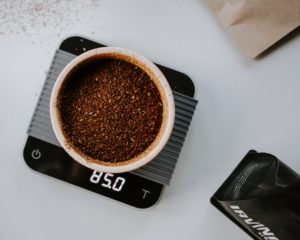 The grind is a critical part of flavoring the cup! For coffee brewers and pour overs we recommend a medium-fine grind, somewhere between auto drip and fine for bold, full flavor. If you brew coffee that is ground too coarse, the coffee can be under-extracted (weak), and less flavorful. If your coffee is ground too fine, however, the coffee can be over-extracted and bitter. Small changes in grind size can drastically affect the taste of your final brew.
The grind is a critical part of flavoring the cup! For coffee brewers and pour overs we recommend a medium-fine grind, somewhere between auto drip and fine for bold, full flavor. If you brew coffee that is ground too coarse, the coffee can be under-extracted (weak), and less flavorful. If your coffee is ground too fine, however, the coffee can be over-extracted and bitter. Small changes in grind size can drastically affect the taste of your final brew.
Shopping for a Burr Grinder? We love this article by Mic.com ranking “The 4 Best Burr Coffee Grinders” featuring both manual and electric burr grinders as low as $27.
What kind of coffee grinder do you have at home?

